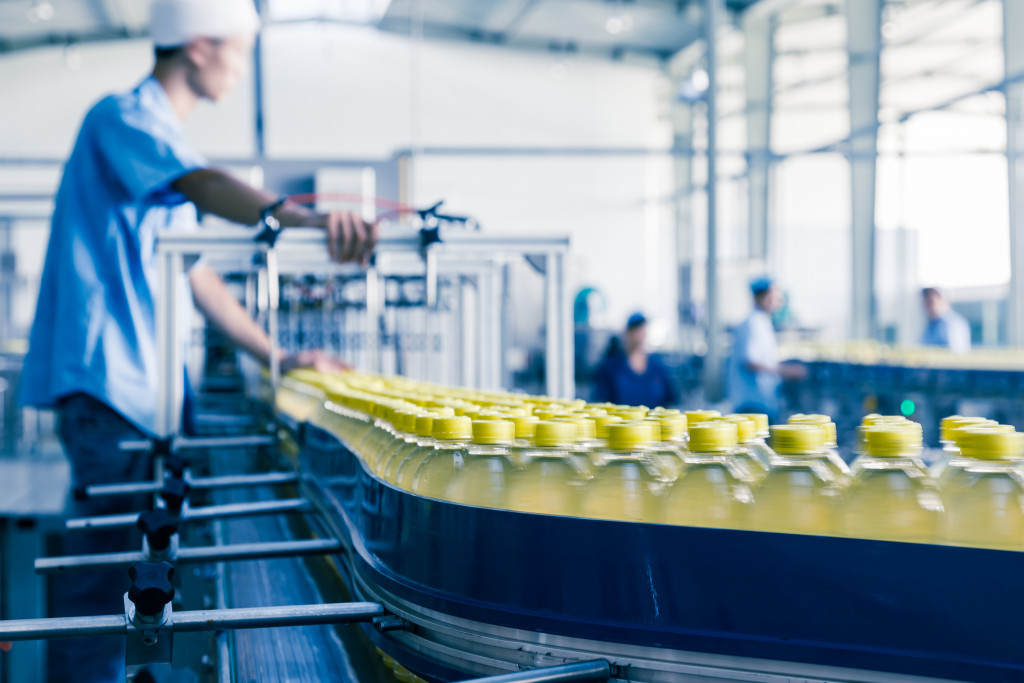- Work with professional cleaning services to remove grease and oil buildup and perform deep cleaning for hard-to-reach areas.
- Provide hygiene training sessions to ensure staff understands the importance of personal hygiene and food safety protocols.
- To reduce contamination risks, utilize the latest hygiene technology, such as automated cleaning systems and UV-disinfecting robots.
- Establish a cleaning schedule and use safe and effective cleaning products to maintain a hygienic environment.
As a food production facility, maintaining high standards of hygiene is crucial. Proper hygiene management practices ensure that the food products meet regulatory requirements and promote the health and safety of the consumers. Here are some best practices for managing hygiene practices in a food production facility:
Professional Services
One of the best ways to maintain high hygiene standards in a production facility is to work with professional cleaning services. These companies are experts in the field and have the equipment and knowledge to handle even the most challenging cleaning tasks. Professional services can provide a wide range of services, including:
Grease Pick-up Services
Grease and oil can be challenging to remove and quickly accumulate in hard-to-reach areas, leading to bacterial growth and other contamination risks. You need the help of experienced yellow grease pick-up services specializing in removing grease and oil buildup in various parts of the facility, including kitchen exhaust systems, hoods, and ductwork. Removing these accumulations regularly reduces the risk of fires and other safety hazards and keeps your facility clean and hygienic. This way, you can be sure that the food produced in your facility is safe for consumption.
Deep Cleaning Services
A deep cleaning service is a comprehensive cleaning that targets all the nooks and crannies of the facility. This service goes beyond the surface and includes cleaning vents, pipes, and other hard-to-reach areas. Deep cleaning services are essential to remove accumulated dirt and debris that regular cleaning may not address. This helps to ensure that the most challenging spaces are taken care of and reduces potential contamination risks.
Hygiene Training
Another crucial aspect of maintaining high hygiene standards in a production facility is to provide regular hygiene training to the employees. Your staff are the ones handling food and are exposed to potential contamination risks. They need to understand the importance of maintaining good hygiene standards to minimize contamination risk. Hygiene training sessions should be conducted regularly to ensure your staff is aware of the latest hygiene standards and procedures and the proper use of personal protective equipment. The training should cover various topics, including:

Personal Hygiene
Personal hygiene is critical to prevent the spread of bacteria and other harmful microorganisms. Employees should be trained to wash their hands regularly, wear appropriate protective clothing, and avoid touching their faces or hair on the production floor. These simple yet effective measures can help to reduce the risk of contamination and keep your facility safe.
Food Safety Protocols
Employees should also be trained on the food safety protocols specific to the facility, including proper handling, storage, and labeling of food products. The training should also include instructions on identifying potential hazards and what to do in case of a contamination event. This way, all employees know the proper safety protocols for handling food products.
Latest Hygiene Technology
Finally, your staff should be aware of the latest hygiene technology available and how it can help to maintain a hygienic environment. New technologies such as automated cleaning systems, UV-disinfecting robots, and biosensors can help keep your facility clean and safe from contamination. These technologies can reduce the time and effort needed for regular cleaning tasks, making it easier to maintain high standards of hygiene.
Cleaning and Sanitizing Procedures
Cleaning and sanitizing the facility is one of the most critical aspects of maintaining hygiene in a production facility. The cleaning and sanitizing procedures should be clearly defined and documented and include instructions on:

Cleaning Schedule
The cleaning schedule should specify the frequency of cleaning and sanitizing different areas of the facility, including equipment, utensils, and work surfaces.
Cleaning Products
The cleaning products used in the facility should be safe and effective in removing dirt and debris while also killing harmful bacteria and viruses.
Cleaning Equipment
The cleaning equipment should be regularly maintained and cleaned to prevent the spread of bacteria and other microorganisms.
In conclusion, managing hygiene practices in a food production facility require a multifaceted approach that includes working with professional services, providing regular hygiene training, and implementing effective cleaning and sanitizing procedures. By following these best practices, you can ensure the safety and quality of the food products and promote the health and safety of the consumers.
